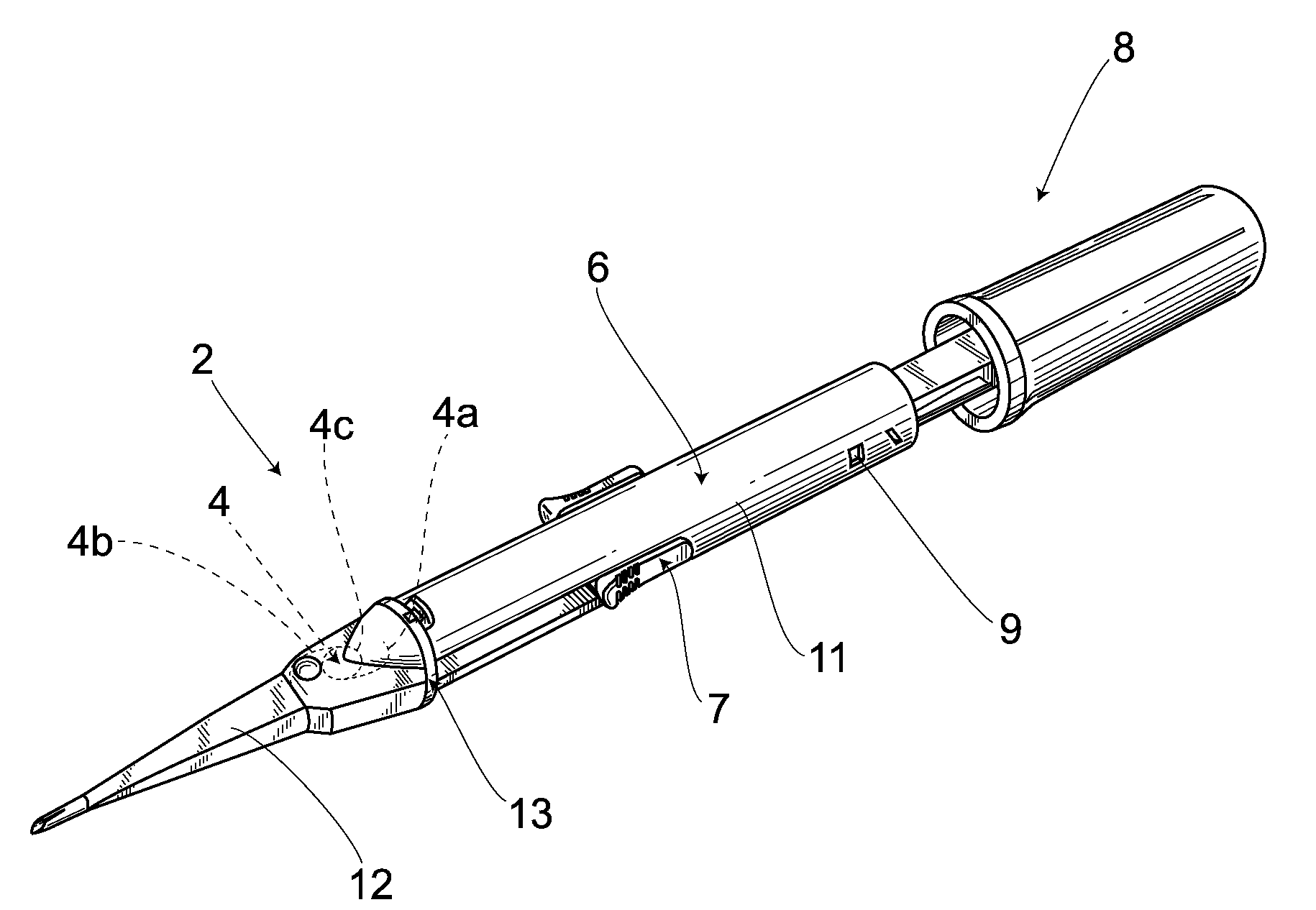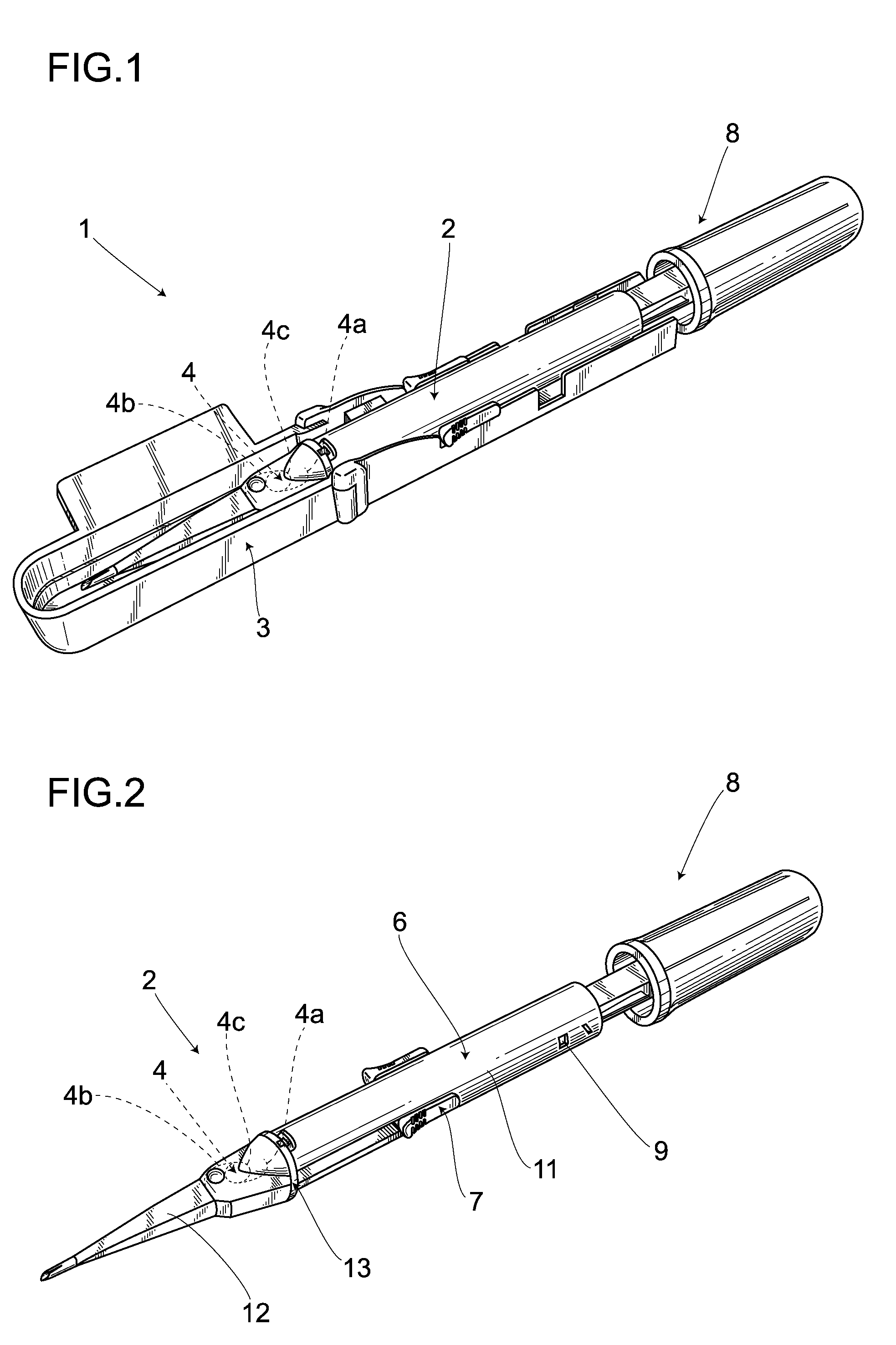Intraocular lens insertion device
a technology of intraocular lens and plunger, which is applied in the field of intraocular lens insertion device, can solve the problems of reducing the possibility of corneal astigmatism or infection disease after surgery, and it is difficult in some cases to obtain the desired property of the intraocular lens appropriately, so as to prevent the optical part from being damaged and prevent the leading end of the plunger from running
- Summary
- Abstract
- Description
- Claims
- Application Information
AI Technical Summary
Benefits of technology
Problems solved by technology
Method used
Image
Examples
first modified embodiment
[0195]In the foregoing embodiment, the explanation has been given of the case where the recess, concaved rearwardly, is formed between the lens contact part 75 and the protrusive part 76 at the front end of the rod 71. The invention, however, is not limited to this case. Namely, as shown in FIGS. 37A and 37B, a rod 100 of a first modified embodiment has a leading end constituted by a lens contact part 75 formed substantially vertical, and a protrusive part 76.
[0196]A rod 105 shown in FIGS. 38A and 38B according to a second modified embodiment has a two-forked protrusive part 106 (106a, 106b) formed at the leading end. Accordingly, when the intraocular lens 4 pushed out by the plunger 8 deforms, the protrusive part 106 can deform in a direction in which the divided leading ends become narrow by external force. This enables the narrowed leading ends of the two-forked protrusive parts 106a, 106b to absorb a load applied to the basal portion of the support part 4a of the intraocular len...
second modified embodiment
[0198]Further, a rod 115 of a fourth modified embodiment shown in FIGS. 40A and 40B has a protrusive part 116 having a width which is about ½ of the axial part 74, and provided at one corner of the leading end of the rod 71. The protrusive part 115 can easily deform with force in a direction orthogonal to the lens traveling axis A in comparison with the foregoing embodiment, and can reduce a load applied to the basal portion of the support part 4a of the intraocular lens 4 like in the second modified embodiment, thereby preventing the basal portion of the support part 4a from being damaged.
fifth modified embodiment
[0199]A rod 120 of a fifth modified embodiment shown in FIGS. 41A and 41B has a protrusive part 121 tapered toward a leading end of the rod 120. Further, the leading end 121a, an upper end 121b, and an upper corner 121c of the protrusive part 121 are each formed in a smoothly curving manner. The upper surface 74a and corner 74b of the axial part 74 are also formed in a smoothly curving manner, specifically in a portion where the axial part 74 and the support part 4a of the intraocular lens 4 are overlapped with each other. Thus, when the intraocular lens 4 is ejected out, a rear support part 4a staying between the axial part 74 and the nozzle 32 can be smoothly pushed out into an eye as the shape of the optical part 4b is gradually restored.
[0200]Although the explanation has been given of the case where the lens contact part 75 is a plane in the foregoing embodiment, the invention is not limited to this case, and the lens contact part 75 can be structured in such a manner as to incr...
PUM
 Login to View More
Login to View More Abstract
Description
Claims
Application Information
 Login to View More
Login to View More - R&D
- Intellectual Property
- Life Sciences
- Materials
- Tech Scout
- Unparalleled Data Quality
- Higher Quality Content
- 60% Fewer Hallucinations
Browse by: Latest US Patents, China's latest patents, Technical Efficacy Thesaurus, Application Domain, Technology Topic, Popular Technical Reports.
© 2025 PatSnap. All rights reserved.Legal|Privacy policy|Modern Slavery Act Transparency Statement|Sitemap|About US| Contact US: help@patsnap.com



